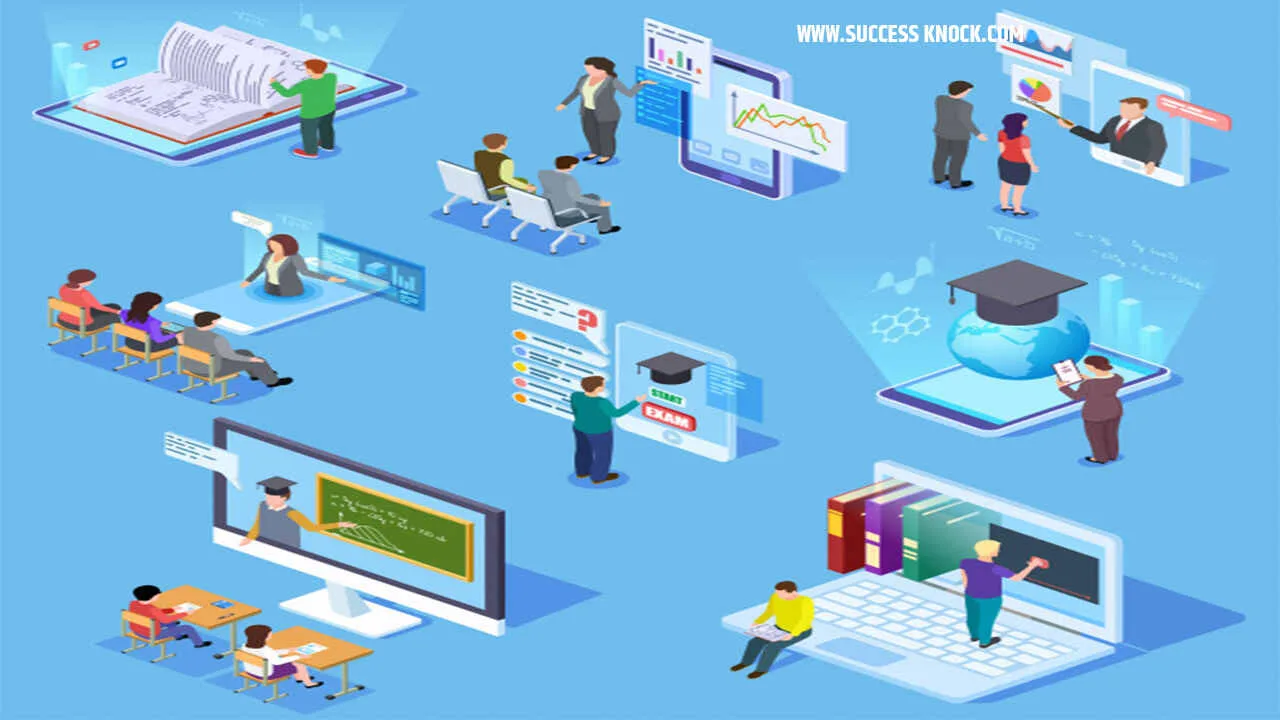In recent years, the field of education has witnessed a remarkable transformation with the advent of online learning platforms and virtual classrooms. These innovative tools have revolutionized the way we acquire knowledge, enabling individuals from all walks of life to access high-quality education conveniently and flexibly. In this blog post, we will delve into the world of online learning platforms and virtual classrooms, highlighting their benefits, features, and the exciting potential they hold for the future of education.
Complementing online learning platforms, virtual classrooms have gained prominence as immersive and interactive spaces that replicate the traditional classroom environment in a digital realm. With features like video conferencing, real-time collaboration tools, and interactive multimedia, virtual classrooms foster engagement, participation, and active learning. Students can interact with their peers and instructors, ask questions, participate in discussions, and receive immediate feedback, recreating the dynamic interactions that occur within physical classrooms.
The Rise of Online Learning Platforms:

Online learning platforms have gained immense popularity due to their convenience and flexibility. They provide learners with the opportunity to access a vast array of courses, covering diverse subjects and fields of study, all from the comfort of their own homes. These platforms offer self-paced learning, allowing individuals to learn at their own speed, and making education accessible to those with busy schedules or geographical limitations.
Advantages of Online Learning Platforms:

Variety and Accessibility:
Online learning platforms offer a wide range of courses, catering to different interests, skill levels, and professional goals. Learners can choose from subjects like programming, business, art, language, and much more. Moreover, these platforms are accessible globally, breaking down the barriers of physical location and making education available to anyone with an internet connection.
Flexibility and Convenience:
One of the biggest advantages of online learning platforms is the flexibility they offer. Learners can access course materials and lectures at any time and from anywhere, allowing them to fit their education around their existing commitments. Whether you’re a full-time professional, a stay-at-home parent, or a student juggling multiple responsibilities, online learning platforms provide the flexibility to learn at your own pace.
Interactive Learning Experience:
Contrary to popular belief, online learning platforms offer more than just passive video lectures. Many platforms incorporate interactive elements such as quizzes, discussion forums, and assignments, fostering engagement and enhancing the learning experience. Additionally, learners can connect with instructors and fellow students, creating a sense of community and collaboration.
Exploring Virtual Classrooms:
Virtual classrooms take online learning to the next level by simulating a traditional classroom environment. Through the use of video conferencing tools and collaborative software, learners can participate in live lectures, interact with instructors and peers, and engage in real-time discussions. Virtual classrooms provide an immersive learning experience, bridging the gap between remote learning and face-to-face interaction.
Benefits of Virtual Classrooms:

Real-Time Interaction:
Virtual classrooms enable learners to interact with instructors and classmates in real-time, fostering active participation and engagement. Students can ask questions, seek clarification, and engage in discussions, creating a dynamic learning environment.
Collaborative Learning:
Virtual classrooms facilitate collaborative learning, allowing students to work together on group projects, presentations, and case studies. Through breakout rooms and shared whiteboards, learners can collaborate effectively, enhancing their problem-solving and teamwork skills.
Personalized Attention:
Virtual classrooms provide instructors with the ability to give individual attention to each student. With smaller class sizes and interactive features, instructors can closely monitor student progress, provide personalized feedback, and tailor instruction to meet the specific needs of learners.
Conclusion:
Online learning platforms and virtual classrooms have transformed the educational landscape, providing accessible and flexible avenues for learning. With their wide variety of courses, convenience, and interactive features, these platforms offer a comprehensive and immersive learning experience. As technology continues to advance, the future of education looks bright with the continued growth and innovation of online learning platforms and virtual classrooms.
the future of education is undeniably being shaped by online learning platforms and virtual classrooms. These innovative technologies have revolutionized the way we learn, breaking down geographical barriers and providing access to quality education for individuals across the globe. Online learning platforms offer a wide range of courses and resources, catering to diverse learning styles and preferences. Virtual classrooms, on the other hand, recreate the traditional classroom experience in a digital environment, fostering interaction, collaboration, and engagement among students and instructors.
The benefits of online learning platforms and virtual classrooms are numerous. Firstly, they provide flexibility and convenience, allowing learners to access educational content at their own pace and schedule. This is particularly beneficial for individuals with other commitments, such as working professionals or parents. Secondly, these platforms offer personalized learning experiences, tailoring content and assessments to the needs and abilities of each learner. This individualized approach enhances learning outcomes and promotes student success.
click here: https://successknocks.com





